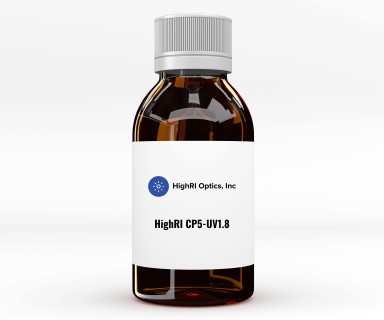OVERVIEW
HighRI has created the high refractive index materials with high optical transparency in the visible region. The proprietary formulation enables to achieve nanoimprint compatible material with the highest refractive index (1.8 at 590 nm) without the addition of nanofillers (e.g. metal oxide nanoparticles). With the extensive knowledge and experience in the optical material formulation, our formulation can be customized to meet the application specific requirements.
HighRIは、可視領域で高い光学的透明性を備えた高屈折率材料を作成しました。独自の配合により、ナノフィラー(金属酸化物ナノ粒子など)を追加することなく、最高の屈折率(590 nmで1.8)のナノインプリント互換材料を実現できます。光学材料の配合に関する幅広い知識と経験により、当社の配合は、アプリケーション固有の要件を満たすようにカスタマイズできます。KEY METRICS AND RESULTS
- The NIL materials developed have the highest refractive index without nanoparticles in the industry
- High refractive index materials are specially formulated to achieve high transmission and excellent pattternability.
- Indices from 1.8 to 2.0X
- Formulations are customizable based on the application needs

BENEFITS
HighRI’s high refractive index materials can be used for numerous applications to meet the existing fabrication process requirements and discover new opportunities.
Numerous Applications Are possible:
- UV and Thermal Nanoimprint Lithography with controllable residual layer
- High Resolution (sub-10 nm) Nanoimprinting
- Patterning with Photoresist
- Coating over nano/micro structures
- Droplet Dispensing
BENEFITS
HighRI’s high refractive index materials can be used for numerous applications to meet the existing fabrication process requirements and discover new opportunities.
Numerous Applications Are possible:
- UV and Thermal Nanoimprint Lithography with controllable residual layer
- High Resolution (sub-10 nm) Nanoimprinting
- Patterning with Photoresist
- Coating over nano/micro structures
- Droplet Dispensing
CHALLENGES
To enable smaller and more efficient photonic devices, the need for high refractive index materials are higher than ever.
The direct patterning of photonic devices using high refractive index materials and NIL are scalable, low-cost, and offers flexibility on the substrate choices. One of the key challenges are the commercial availabilities of the high-refractive index resins that can satisfy performance and processability.
